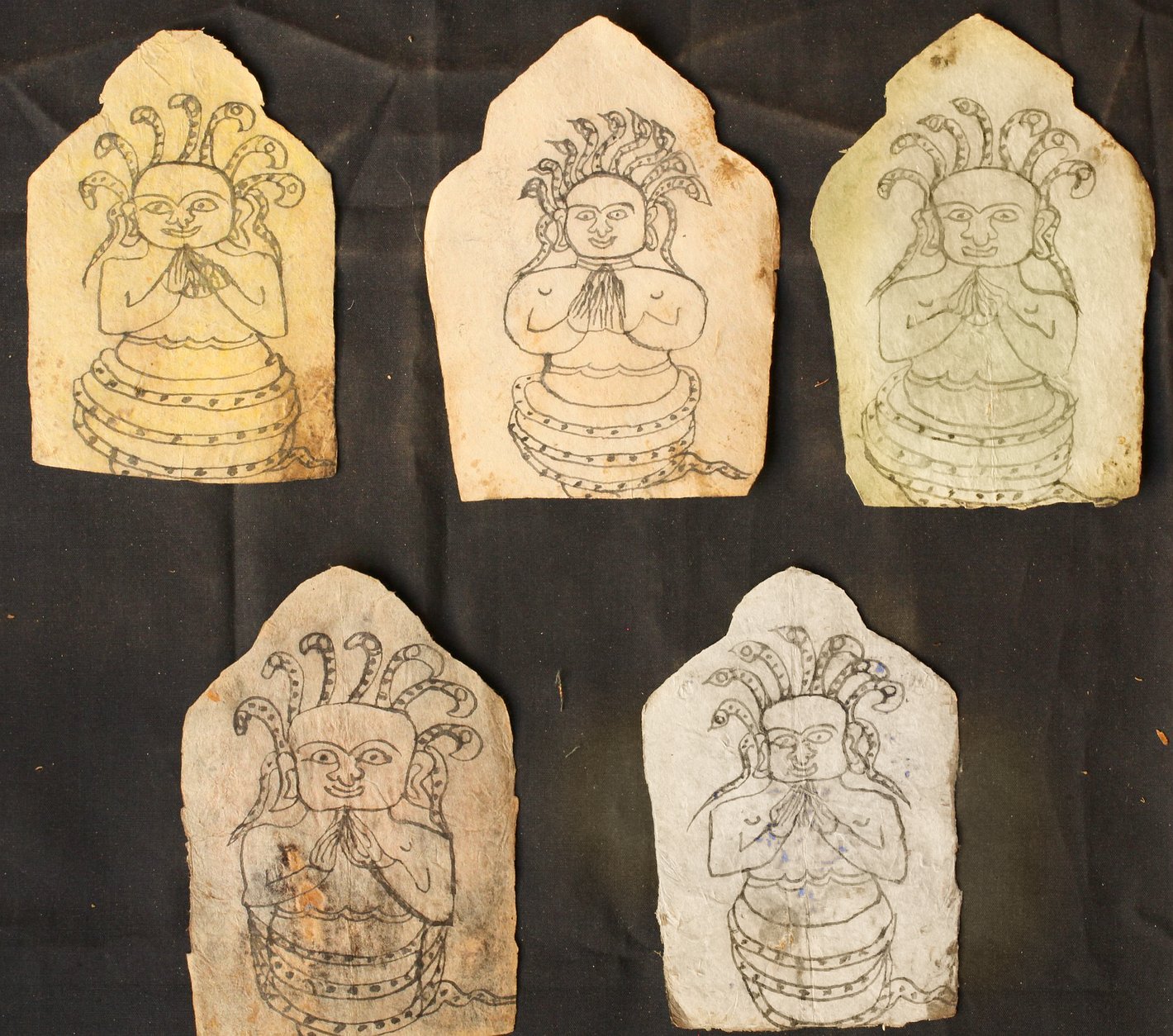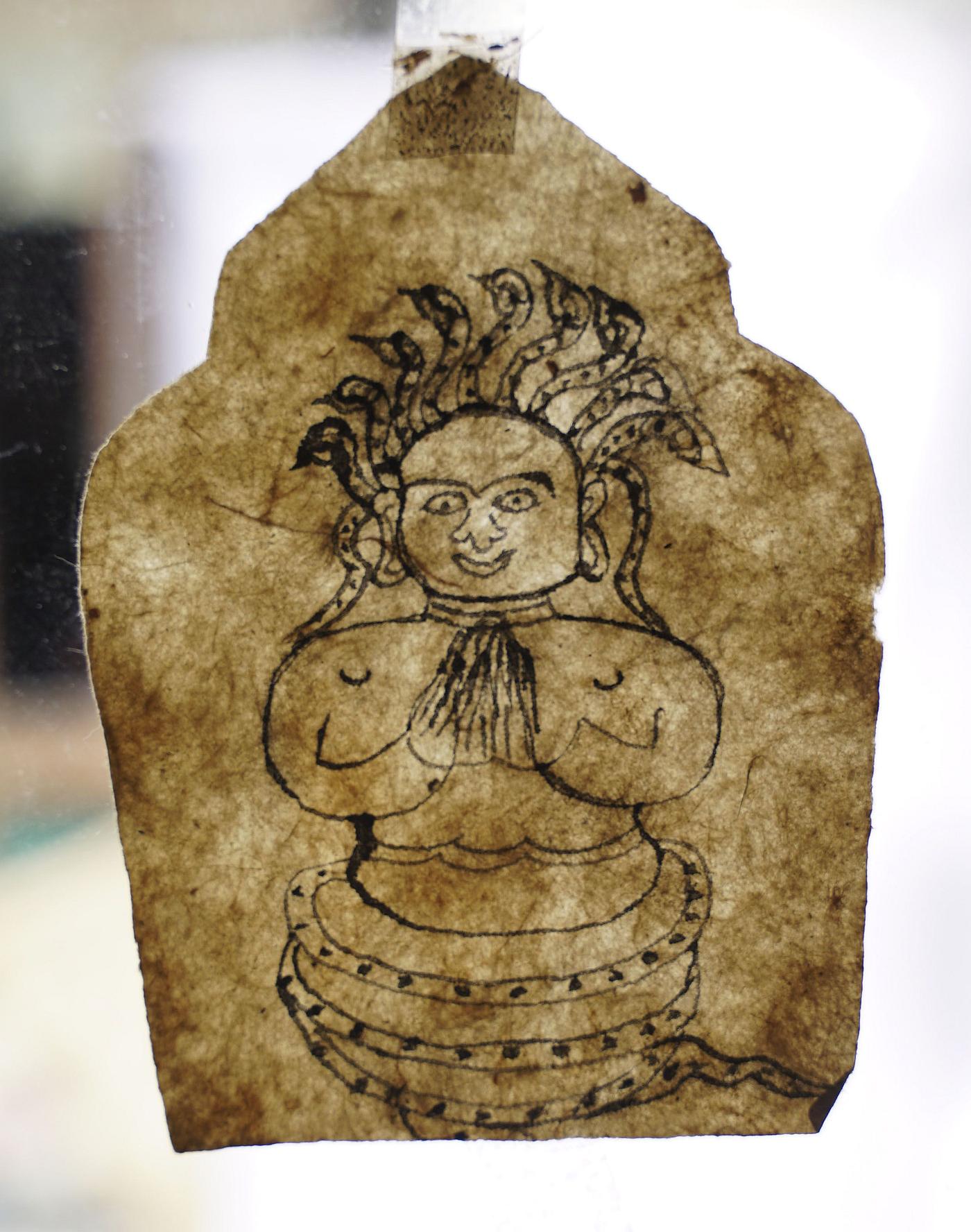DRANGSONG MANUSCRIPTS
| 1. Text number | Drangsong 243 |
| 2. Text title (where present) in Tibetan | |
| 3. Text title (where present) in Wylie transliteration | |
| 4. A brief summary of the item’s contents | Cards bearing images of various klu. |
| 5. Number of folios | 5 cards |
| 6. Scribe’s name | |
| 7. Translation of title | |
| 8. Transcription of colophon | |
| 9. Translation of colophon | |
| 10. Remarks | |
| 11. Remarks on script | None |
| 12. Format | 5 cards |
| 13. Size | |
| 14. Layout | |
| 15. Illustrations and decorations | This ensemble of tsakalis comprises five rectangular cards of different colors (blue, yellow, and green being visible) painted on their front sides with figures of male klu. It must have been displayed as a maṇḍala to propitiate these deities, possibly following the instructions of manuscript Ds 189.Each card possesses a slightly tapered lower half and a trilobed top fitting the figure of the klu. Immediately recognizable to his coiled snake lower body and his hood of seven to nine snake heads, the klu joins his hands in homage in front of the chest.
Interestingly, the iconography of the five deities is almost exactly identical to that of the klu represented on the last folio of manuscript Ds 189, from the number of coils of the snake tail and the dots marking the latter, to the three double curves indicating the abdominal muscles at the junction between the naked torso and what, strangely, may be a lower garment, and the high, lateral position of the nipples, and to the greater number of snake heads turning to the proper right of the figure than to its proper left. This suggests that the figures of the tsakalis were drawn after the model provided for this very purpose by manuscript Ds 189. In comparison with the latter model, however, the style of the present drawings is very naïve, with the proportions of the figures largely varying from one to the other. Among the five klu, the one endowed with a nine-snake hood appears to be slightly more detailed and better dimensioned than the others. The style of these five figures remains nonetheless quite homogeneous, hinting to the work of a single person. While one may wonder then why the present ensemble comprises only five klu and not nine as conveyed by the exemplary drawing of a maṇḍala in manuscript Ds 189, it may be worth recalling that the associated text does not appear to mention more klu than those of the five main directions. |
| 16. Paper type | Woven, 1 layer, soft |
| 17. Paper thickness | 0.10–0.14 mm |
| 18. Nos of folio sampled | Sample from the card of natural colour, right edge |
| 19. Fibre analysis | |
| 20. AMS 14C dating | |
| 21. XRF analysis | |
| 22. RTI | |
| 23. GCMS |


